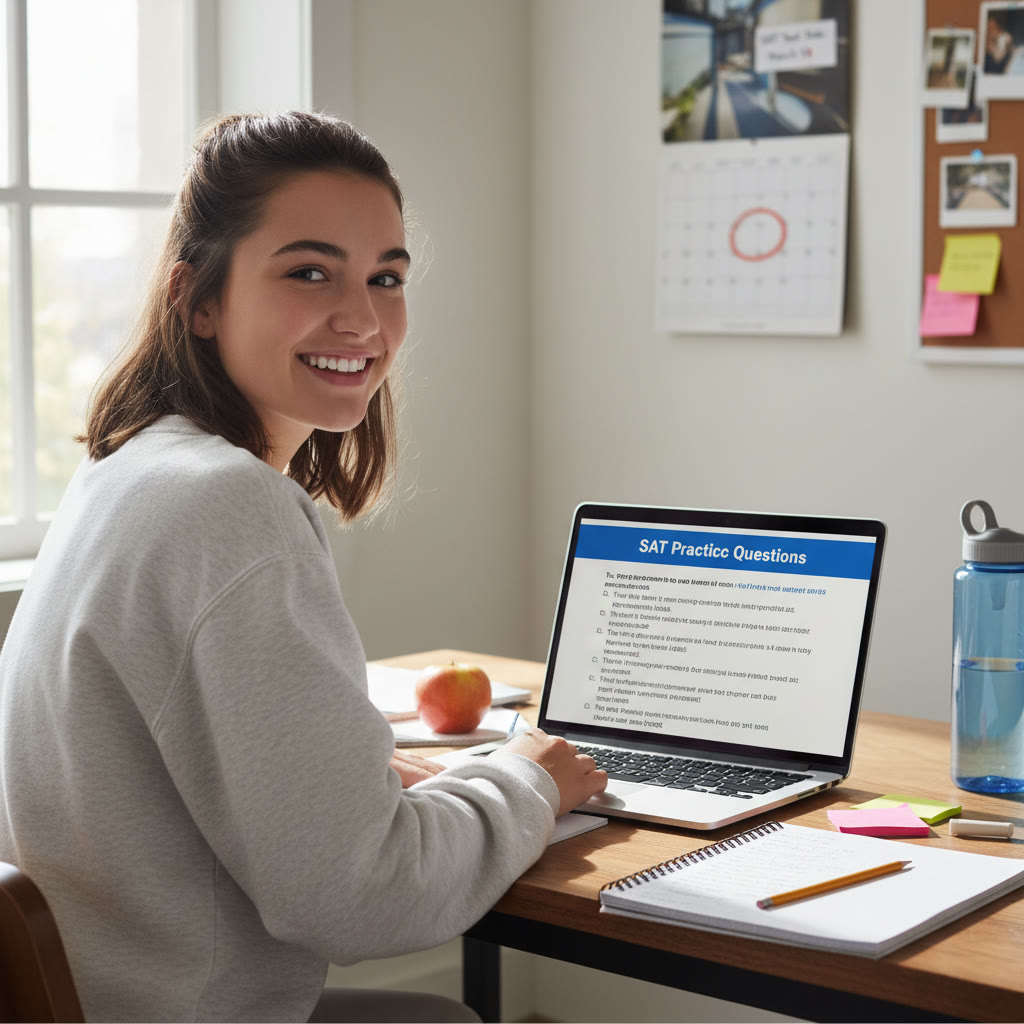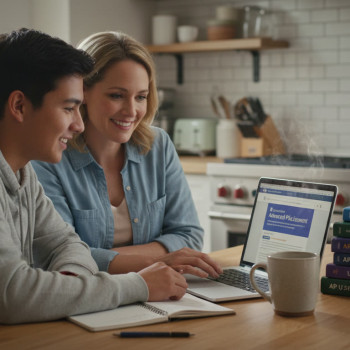How High Should Your SAT Score Be for Ivy League Admissions?
Thinking about applying to an Ivy League school, or helping a student who is? That beautiful, nerve-tinged question—”How high should my SAT score be?”—is one every serious applicant asks. Let’s walk through this together in a clear, compassionate way: what numbers matter, how admissions officers actually use scores, what the current test policies mean, and how you can build a realistic plan that increases your chances without burning out.

Why the SAT still matters (but it’s not everything)
First, some plain talk. The SAT remains a common data point colleges use to compare applicants from different schools and regions. For many highly selective colleges, it’s a numerical shorthand that helps sort thousands of applications. But a number alone won’t tell the whole story of who you are—your grades, course rigor, essays, letters of recommendation, extracurricular achievements, and personal context carry enormous weight too.
That means your SAT score should serve your application narrative, not define it. A thoughtfully chosen target score helps you figure out where to apply, how much to prepare, and whether a particular Ivy is a reach, match, or stretch.
Test policies to keep in mind
1) Test-optional versus test-required
Many colleges recalibrated their testing policies in recent years. Some Ivies have moved between test-optional, test-blind, or reinstated score consideration depending on annual policy updates. The practical takeaway: always check each college’s current admissions policy well before applying. If a school is test-optional, submitting a score can still help—especially if the rest of your application is less quantifiable (for example, from a school with less national recognition).
2) The digital SAT era
The SAT is increasingly administered in a digital format in many locations. The digital test is shorter, adaptive across sections, and comes with a slightly different experience than the paper test. Preparation strategies should reflect that format—timing practice, device readiness, and practice in the exact test interface matter.
What SAT scores do Ivy League admittees usually have?
Instead of a single magic number, think in ranges and percentiles. Generally speaking, admitted students at Ivy League schools cluster at the high end of the SAT scale (1400–1600), but within that range there’s variation by school and by year.
Here’s a practical summary to orient you—remember these are general expectations and not guarantees:
- Competitive baseline: 1450+ — a score that puts you in a strong position at many Ivies.
- Very competitive: 1500–1550 — common among admitted applicants at elite institutions.
- Top-tier: 1560–1600 — a large proportion of admitted students at the most selective Ivies will fall here, but it is not the single deciding factor.
- Under 1450 — still possible if your profile has exceptional non-test strengths (unique achievements, outstanding essays, strong recommendations, or compelling personal circumstances).
How admissions teams actually use SAT scores
Admissions officers don’t look at SAT scores in isolation. They use them to:
- Compare academic readiness across applicants from different schools and curricula.
- Identify candidates for scholarships or honors programs.
- Inform course placement or skip placement testing in some cases.
However, the weight assigned to scores varies. For some Ivy-level programs, the SAT is an initial filter within a holistic process. For others, it’s a supporting data point that complements GPA and qualitative elements.
Set a realistic SAT target: a practical approach
Instead of chasing a single “Ivy number,” set a personalized target based on three steps:
Step 1 — Know your baseline
Take an official full-length digital practice test under timed conditions. Your baseline tells you how much work is required. Most students see gains with a few focused months of study; the size of gain depends on current skills and study efficiency.
Step 2 — Research school ranges
Look up the middle 50% SAT ranges of the schools you like (the score range that captures the central half of admitted students). Use those ranges to classify schools into reach, match, and safety categories. An important nuance: if you have other standout credentials (research, national awards, exceptional talent), a lower SAT can still be competitive.
Step 3 — Time and test planning
Decide how many months you can study seriously without compromising schoolwork. Create a timetable that includes practice tests every 3–6 weeks to measure progress and shift strategy. For many students aiming to move from mid-1300s to 1500+, 3–6 months of deliberate practice is common.
Concrete score plan and example schedule
Below is an example plan for a student starting with a 1320 baseline aiming for 1500 in six months.
| Timeframe | Focus | Weekly Commitment | Milestone |
|---|---|---|---|
| Month 1 | Diagnostics & fundamentals (reading strategies, core math topics) | 6–8 hours | Baseline practice test; target +20–30 points |
| Months 2–3 | Skill-building and timed sections (vocab-in-context, algebra, problem-solving) | 8–10 hours | Practice test every 3–4 weeks; +40–80 points |
| Months 4–5 | Advanced practice and error analysis (topics of weakness, timing) | 8–12 hours | Practice tests under full digital conditions; +30–60 points |
| Month 6 | Polish, simulated test weekends, stamina & strategy | 6–10 hours | Final practice test near target; test registration |
How to prioritize: math vs. evidence-based reading & writing
Which section should you focus on? That depends on your baseline. Here’s a practical rule of thumb:
- If your math score is significantly lower than your EBRW score, invest in targeted math tutoring and practice—most gains are efficient here because math topics repeat predictably.
- If reading is weaker, focus on high-quality practice that builds comprehension strategies, passage mapping, and time management.
- For many students, the highest ROI is improving the weaker section by 40–80 points while preserving strengths.
Why one-on-one guidance helps—and how Sparkl fits naturally
Generic study plans are helpful, but targeted, individualized coaching often accelerates progress. Sparkl’s personalized tutoring can help in several practical ways: 1-on-1 guidance to diagnose specific error patterns, tailored study plans that fit busy school schedules, expert tutors who explain not just what to practice but why, and AI-driven insights that highlight which practice items will give the best score improvement. When used alongside official practice tests and steady effort, these supports can meaningfully increase a student’s efficiency and confidence.
Common misconceptions and real-world context
Myth: You need a perfect 1600 to get into an Ivy.
False. Many admitted students do have near-perfect scores, but tons of factors go into admissions. A 1560 helps, but it doesn’t guarantee admission. Equally, a student with a 1480 and exceptional other credentials can and does get admitted.
Myth: If a school is test-optional, scores don’t matter at all.
Not quite. Test-optional means you can decide whether scores enhance your application. If you include a strong score, it will be considered. If your application is stronger without a test score (for example, due to pandemic-related academic disruption or lack of access to testing), you may opt not to submit.
Real-world example
Imagine two applicants to a hypothetical Ivy-equivalent program. Student A has a 1580 SAT, very good grades, and a compelling research project but generic essays. Student B has a 1500 SAT, near-perfect grades, leadership in a nonprofit they founded, and a deeply personal essay that connects to their life trajectory. Admissions is holistic: both students could be admitted for different reasons. Numbers help, but story and fit often decide close calls.
Which lopsided profiles can succeed?
Some students have lower test scores but shine in other areas. Examples of profiles that can still be competitive:
- Exceptional artistic talent with national recognition.
- Original scientific research and publications or substantial lab experience.
- Leadership of a large, sustained community-impact project.
- Life circumstances that show resilience and context—when paired with strong grades and recommendations.
These don’t replace academic readiness entirely, but they provide distinct reasons for a college to admit a candidate despite a lower SAT.
How many times should you take the SAT?
Quality beats quantity. Taking the test two to three times is common: once to set a baseline, a second time after focused study, and a third time only if you have a clear plan to improve on specific weaknesses. Many students see their biggest jump between the first and second attempt. If your preparation is unfocused and you see no improvement after multiple takes, pause and refine your strategy.
Score-sending strategy
When you send scores, consider these practical points:
- Superscoring: Some colleges combine section scores from multiple test dates to create the highest possible composite. Know each college’s policy.
- Send your best scores to test-optional schools if they strengthen your narrative.
- If a school is test-blind (doesn’t consider scores at all), don’t send them—focus your energy elsewhere.
Practical study resources and habits
Effective preparation blends high-quality materials, realistic timing, and reflection. Some habits that consistently help students:
- Take official digital practice tests to mirror test conditions (don’t just do untimed question sets).
- Review every practice test thoroughly: understanding why an answer was wrong is where real gains are made.
- Mix targeted drills with full-length practice tests to build both skills and stamina.
- Schedule short daily practice sessions rather than long, infrequent marathons—consistency wins.
- Consider targeted 1-on-1 tutoring if progress stalls; individualized feedback accelerates improvement.
When your score is good but admissions still stress you out
If you’re sitting at a strong score (say 1500–1560) and still anxious, remember to broaden your strategy: craft essays that reveal authentic voice, gather recommenders who know you well, and pursue supplemental materials (portfolios, research summaries) that showcase your strengths. Admissions committees look for students who will contribute to campus life and demonstrate intellectual curiosity—not just perfect test takers.

Final checklist before you apply
- Confirm each target college’s current testing policy (test-optional, test-required, or test-blind).
- Compare your SAT to each school’s middle 50% range and classify schools into reach/match/safety.
- Decide whether submitting scores strengthens your application narrative.
- Create a focused study plan with timed practice and realistic milestones.
- Consider targeted 1-on-1 tutoring or personalized study plans if you want efficient gains—Sparkl’s approach to tailored coaching and AI-driven insights can help customize study time around schoolwork and boost score efficiency.
- Practice test-day logistics: digital device prep, scheduling, and rest—reduce surprises on the big day.
Parting words: aim high, prepare smart, and tell your story
If you want a single sentence to carry forward: aim for a score that places you comfortably within the middle-upper range of your target schools, then invest the same energy in essays, recommendations, and unique achievements. Scores open doors, but your application—taken as a whole—creates the reason an admissions officer will remember you.
Preparing for the digital SAT is a marathon and a sprint: steady daily work, occasional intense practice weekends, and smart help when you need it. If one-on-one tutoring, a tailored study plan, or AI-driven insight sounds appealing, consider options that prioritize diagnosis and efficiency. A focused program like Sparkl’s can provide that personalized nudge—helping students convert effort into measurable score gains while keeping academics and wellbeing in balance.
Above all, keep perspective. Whether your score ends up at 1500 or 1580, the best applications combine evidence of academic readiness with authentic personality and purpose. Do the work, use the data, but remember to let your real self come through on the page.
Want a quick next step?
Take an official practice Digital SAT under timed conditions this weekend. Record your baseline, set a realistic target, and build a six-week plan. If you’d like customized help turning weak areas into strengths, a short series of diagnostic sessions with an expert tutor—paired with a tailored study plan—often shows the fastest progress.
Good luck—and breathe
Applying to Ivy League schools is intense, but it’s also an opportunity to reflect on what you care about and how you’ve grown. Keep your goals clear, balance preparation with rest, and remember that whether you end up at an Ivy or another excellent college, the right fit will embrace who you are and what you want to do next.


















No Comments
Leave a comment Cancel